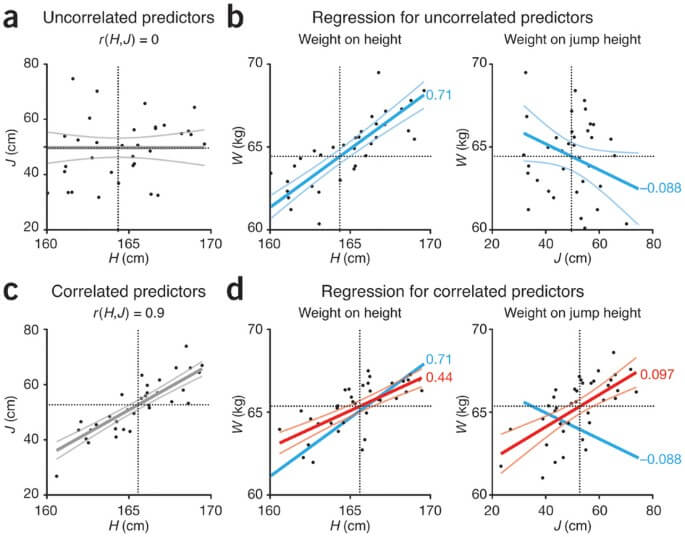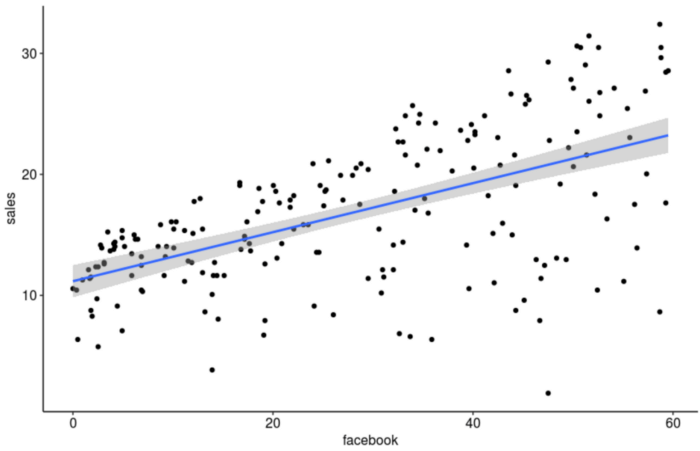Add Marketing Mix Modeling (AKA Media Mix Modeling, MMM) to Your Measurement Strategy

The effectiveness of marketing efforts was much easier to quantify when there were only a few media channels from which to choose. (Can you even remember that far back!?) These days it’s not so simple.
Today’s marketers must contend with big data, a constantly evolving digital landscape, and expectations of hyper-personalization (without breaching privacy, of course). Then there’s the unrelenting pressure to regularly prove the value of their efforts to stakeholders, something only 35% of marketers feel they can quantify.
Marketers can use three broad approaches to demonstrate the impact of marketing spend across their channels: single-touch attribution, multi-touch attribution, and marketing mix modeling. That last one has experienced a bit of renaissance thanks to the impending demise of third party cookies, and we think it’s worth including in your measurement strategy.
We’ll start with a definition of marketing mix modeling and a brief look back at its origins. Then we’ll detail how MMM works, why it’s valuable in a post-cookie world, and how it fits into a broader marketing measurement strategy. And, of course, we’ll share some MMM examples along the way.
Let’s go!
Getting Comfy-Cozy with MMM
What is Marketing Mix Modeling (AKA Media Mix Modeling & MMM)?
Every marketer understands the 4Ps of the marketing mix — product, price, place, and promotion— and the role they play in marketing a product or service.
Marketing mix modeling, also known as media mix modeling, measures how much success can be attributed to these elements. In other words:
- Was it the specific marketing channel that spurred the user to act?
- Was it a special promotion?
- Or was there another factor at play?
MMM differentiates between the success factors using an analytical approach and historical data (ideally 2-5 years’ worth) to quantify the revenue impact of your individual marketing elements. External factors like seasonality, promotions, economic/market conditions, and other things influencing customer behavior are also considered.
Marketing mix modeling will help you:
- Determine the ideal marketing channel allocation to support MarkOps KPIs and maximum ROI
- Forecast future sales based on marketing spend analysis
- Identify essential revenue drivers, such as marketing channel, competition, price, weather, and macro-economic factors
- Calculate hypotheticals such as the media investment needed for a 25% year-over-year revenue increase
Although MMM can be applied to all marketing activities, it’s most effective for digital channels such as social, paid search, display, email, and the like.
That’s not to say MMM didn’t get its start in more physical realms, like everything else in marketing. Consider “a billboard” a display ad and “the people that drive by it on the highway” as the segmented audience. Vary the mix of ads and locations, scale across the country, and you could learn a lot. Then consider how limited and cumbersome this data would be, and pivot back to digital.
Here’s another example:
An Early Example of Marketing Mix Modeling
The MMM technique dates back to the ‘60s and ‘70s when the marketing landscape was simpler and limited to a handful of TV networks and print advertisers. Kraft was an early adopter, using the method for their Jell-O product. MMM would have helped them understand how, when, and where they advertised would impact sales.
For example, Kraft would have been able to see the impact of different levels of advertising and location on sales. Perhaps they ran a TV ad campaign in eight markets during the month of March. Suppose the data showed a significant increase in Jell-O sales in all eight markets. In that case, they may have used that information to support a budget increase for TV advertising to additional markets.
On the other hand, if Jell-O sales only increased in the southern markets, where temperatures were already soaring, they might pursue a more seasonal ad strategy.
Over time, Kraft could have used the data they collected from these “experiments” as a model for future campaigns and sales forecasts.
Kraft was undoubtedly on the cutting edge with its form of MMM. But the advent of digital marketing, artificial intelligence, and big data introduced a modern form of media mix modeling, one that can leverage data from disparate sources to arrive at insights in near real-time.
Whether that data converges at a multi-party approach, such as a data clean room, or within the organization from tapping multiple silos, or somewhere else, its goal is to add rich context that helps make data-driven decisions be faster and more accurate (read: more profitable).
How Does MMM Work? (The 4 Phases of Marketing Mix Modeling)
MMM uses advanced analytics to evaluate each marketing tactic for its contribution to sales, effectiveness, efficiency, and ROI. Marketers can use these findings to architect data-driven marketing strategies, optimize the marketing mix, and forecast future sales.
Generally speaking, there are four phases of a MMM process.
1. Data collection
MMM requires access to aggregated historical data from your marketing activities, non-marketing sources, and data related to external factors. If you still rely on third party cookies for some of this information, you’ll need to shift your focus to first party data collection to gauge users’ reactions to your marketing mix.
Your organization should have strong data management practices including metadata management and a marketing taxonomy to create models you can depend on. Of course, ensuring data integrity from all data sources (i.e., clean rooms and 2P data partnerships) is an essential part of that.
2. Modeling
MMM works best with online channels versus hard-to-measure traditional methods like broadcast and print. If you invest primarily in digital marketing, MMM can give you an accurate ROI with fast, dependable insights for decision-making.

Most MMM platforms function similarly, using multi-linear regression analysis (explained here and in the image below in the context of nature and life sciences — yeah, it’s a pretty high-level data science approach).
To create a model, you’ll need to establish the dependent variable or business outcome you want to explain. Typically that variable is sales. The simple linear regression below shows how a single trend can be considered (and in comparison with the above, you can see how multiple lines and data plots can be compared), in this case for social media channels’ impact on sales.

Next, you’ll need to determine the independent variables or the factors that will affect the business outcome. It’s important to include variables you can control like price, channel, duration, and those you cannot, such as competition and inflation. The “model” is an equation between your chosen dependent and independent variables.
3. Data Analysis & Insights
Once you have a solid model in place, you can perform analysis and uncover insights.
Start by evaluating the contribution of each channel to the business outcome you set out to explain. In this case, this will allow you to rank your marketing campaigns according to their impact on sales. From there you can compute media effectiveness, efficiency, and ROI.
You can use your model for forecasting too. Just keep in mind that models based on historical data assume past patterns will repeat in the future and don’t account for changes in the landscape.
4. Optimization
The last phase of marketing mix modeling involves using your results to optimize your marketing mix for the future. Using simulation exercises or What-if Analyses allows you to pinpoint the ideal combination of tactics for reaching your revenue goals.
Why is MMM Valuable in a Post Cookie world?
Soon, marketers will lose the ability to track conversions via third-party cookies. Organizations that haven’t prepared for that reality by prioritizing first-party data collection risk experiencing measurement blackout — a near-complete loss of insight into marketing effectiveness.
MMM provides an alternative to other measurement strategies that rely on granular details about the buyer’s journey. Instead, it gives the “big picture” or a way to answer basic questions like: What happens to revenue if I increase ad spend on Facebook by X%?
While MMM leverages historical data for long-term planning decisions, creating and testing your media mix models is important before Chrome ends cookie support. That way, you’ll be able to run it alongside your current consumer-level attribution efforts to verify its usefulness going forward.
The Case for MMM Over MTA (Amex Use Case)
AdExchanger recently outlined how American Express values MMM as they move away from cookie-based multi-touch attribution (MTA). As cookies deprecate, so does the ability to accurately assign attribution to different touchpoints. So, Amex pivoted to marketing mix modeling so they could stop making “assumptions” (based on incomplete MTA) and start making more informed decisions rooted in models and aggregate data.
Beyond common digital touchpoints like email, website, social media, and display ads, Amex had already been using its MMM to measure TV and out-of-home (OOH) marketing, such as digital billboards, QR-code experiences, IoT interactions, but also traditional, tangible media (like an actual billboard).
“Amex now uses MMM for planning purposes and to inform its budget optimizations by channel.”
And you can, too!
Amex even finds ways to go from broad trends to granular tweaks as they finesse their models and get more comfortable using them. They reference audio, such as podcast or streaming advertisements, as one they could now more accurately measure my modeling and auditing their mixes.
Additionally, Amex improves its customer experience by reducing the reliance — and abundance — of retargeting. They only developed the confidence to scale down retargeting because MMM educated them on its reduced efficacy or need (e.g., many people coming to the brand directly, but having attribution tools suggest the retargeting is what converted them).
The global organization’s biggest hurdle came in automating parts of the process and successfully tapping and aggregating its disparate data.
“A model is only as good as the data you put in,” confirms Abhi Juneja, VP of performance marketing and ad tech data science at Amex. Hence the need for org-wide data integrity and more specifically, marketing data standards.
How Media Mix Modeling Fits Into Your Grand Post-Cookie Marketing Measurement Strategy
Today’s savvy marketers, like yourself, must leverage all the data available to them, whether through data marketplaces, cohort marketing, clean rooms, or their own customer data to gain a comprehensive view of their marketing efforts.
They also must create campaigns that span digital and offline media. However, understanding how each campaign, on each medium, drives sales in real-time is challenging.
Implementing a unified marketing measurement strategy helps address the challenge by correlating aggregate data from media mix modeling with consumer-level data offered by attribution methods. Marketers can then determine which campaigns are most effective on the individual level while accounting for overall marketing context and external factors.
Deploying Marketing Mix Modeling: First Steps and What to Read Next
Conditions must be ideal for media mix modeling to perform optimally. In other words, MMM is only as good as the data it receives from every team, channel, tech tool, and walled garden.
Establishing data standards at every point — from ideation to measurement — will not only elevate insights but reduce the time it takes to reach them.
Here are the crucial steps to take as you approach and deploy media/marketing mix modeling (MMM):
- Get your first party data collection strategy down pat
- Proactively prepare your company’s metadata management and marketing taxonomy
- Address data integrity throughout your organization
- Wrangle data sprawl and address data silos





